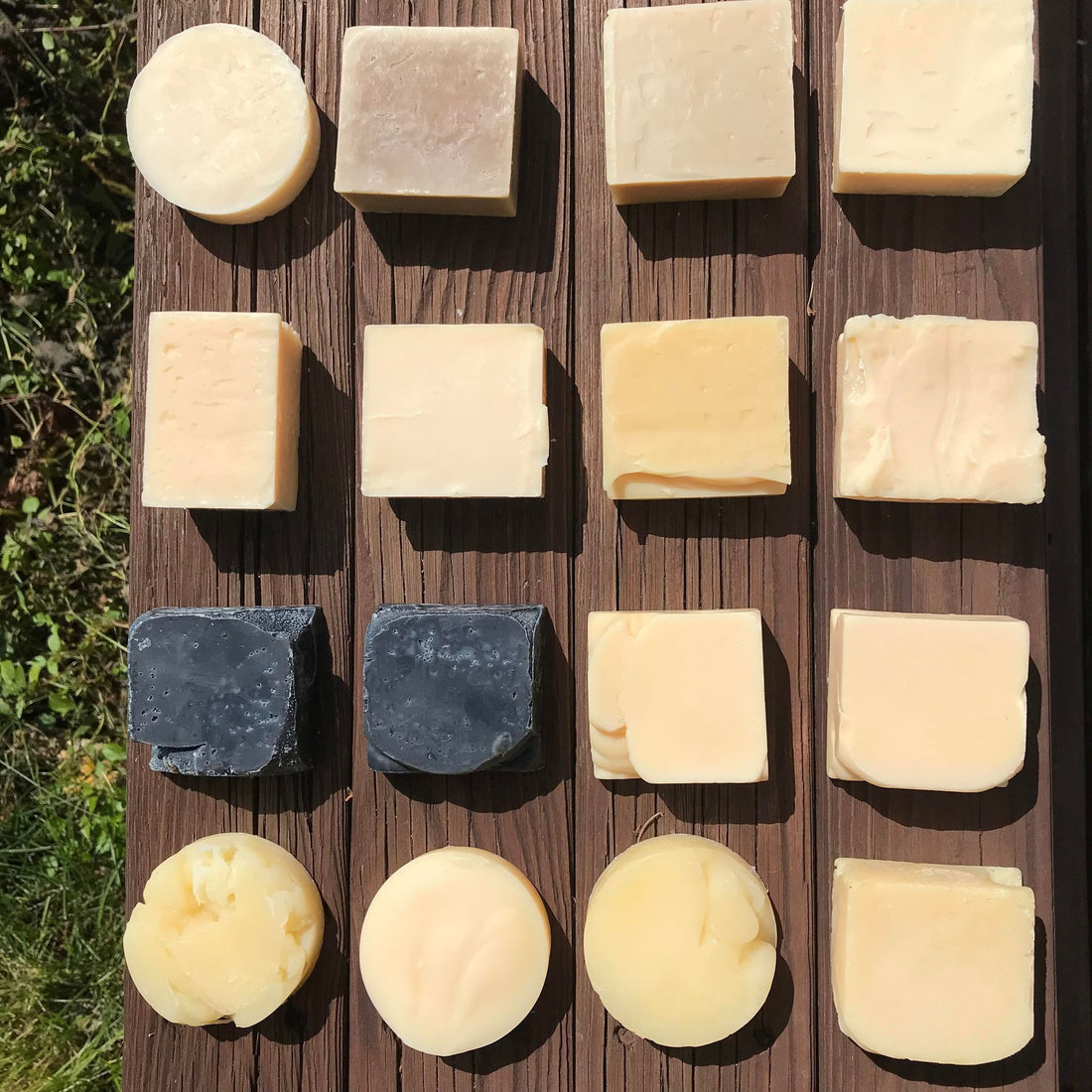
Why doesn't my soap look perfect?
Share
Soap as Art
A bar of soap can be a remarkable art form. Have a quick glance around the internet looking for fancy, quirky, and detailed soaps and you will see the amazing artwork that soap makers are capable of! Alas, I do not count myself among these soap maker artists. Without wishing to cast even the smallest of aspersions upon those who do raise soap making to an art, my goal has always been to make a simple, functional bar of soap that almost anyone can afford to buy regularly.
Functional Soap
When I photograph my soap for the website, I try to pick bars that reflect my typical standards for shipping bars. So, soap that looks good but still may have small imperfections. Below I have sorted out some bars into categories, with pictures of both sides of the bars:


I will absolutely ship anything in the first two rows, no problem. The third row is where I make judgement calls. If the imperfection is more medium than large and the bar is at or above the stated weight, then I will ship it. If there is a large bubble or the bar is very misshapen than it typically goes to farmers market, where customers can pick out their bars individually and avoid the ugly ones if they choose too!
Underweight bars do not get shipped or sold at market. I either use them for ourselves, chop them for Thrifty Soap or donate them to the food shelf.
Here's the side view of those same bars.

Why not insist on perfection?
The problem with maintaining a standard of perfection is that rejecting perfectly good bars of soap not only wastes time and materials but also drives the cost of production up because of that waste. Since one of my goals as a business is affordability, anything I can ethically do to keep the price down is a no brainer.
I do also work towards having as few bars as possible with imperfections. This means working with fresh-as-possible fats, monitoring temperatures during soap making (if the fat is too far above 120f when combined with the lye, it can create the network of small bubbles that's on the rectangular bar in the second row) and managing when the bar reaches "trace" (i.e. starts to thicken and solidify). I usually do pretty well! I had to poke around in the back of my soap drawers to find good examples for the "underweight" and "large imperfections" categories. But I also don't want any customers to be shocked if they receive a bar that looks a little funky!
Beveling
One last note on a practice known as "beveling". This is when the edges and corners of each individual soap bar are trimmed to make them more rounded. In large scale soap production this is done with a machine, but small scale soap makers do it by hand. You can probably guess my stance after reading the first parts of this post! The last time a beveled soap (I used a vegetable peeler!) was when I was making 12 bar batches once a month and selling a few of them on Etsy. So while it does make a fresh bar of soap a little smoother feeling, I no longer find it an efficient use of my time.
It does look nice though. Here's a bar from way back in 2015.

I hope that gives you a good overview of my approach to soap making. If you're looking for a beautiful bar of soap that looks EXACTLY like a slice of watermelon or a goat or an eyeball cupcake (go on, google it...), well, it's the 21st century, you can find it somewhere on the internet! My niche is simple, effective, animal fat soap, so I am sticking to it.
